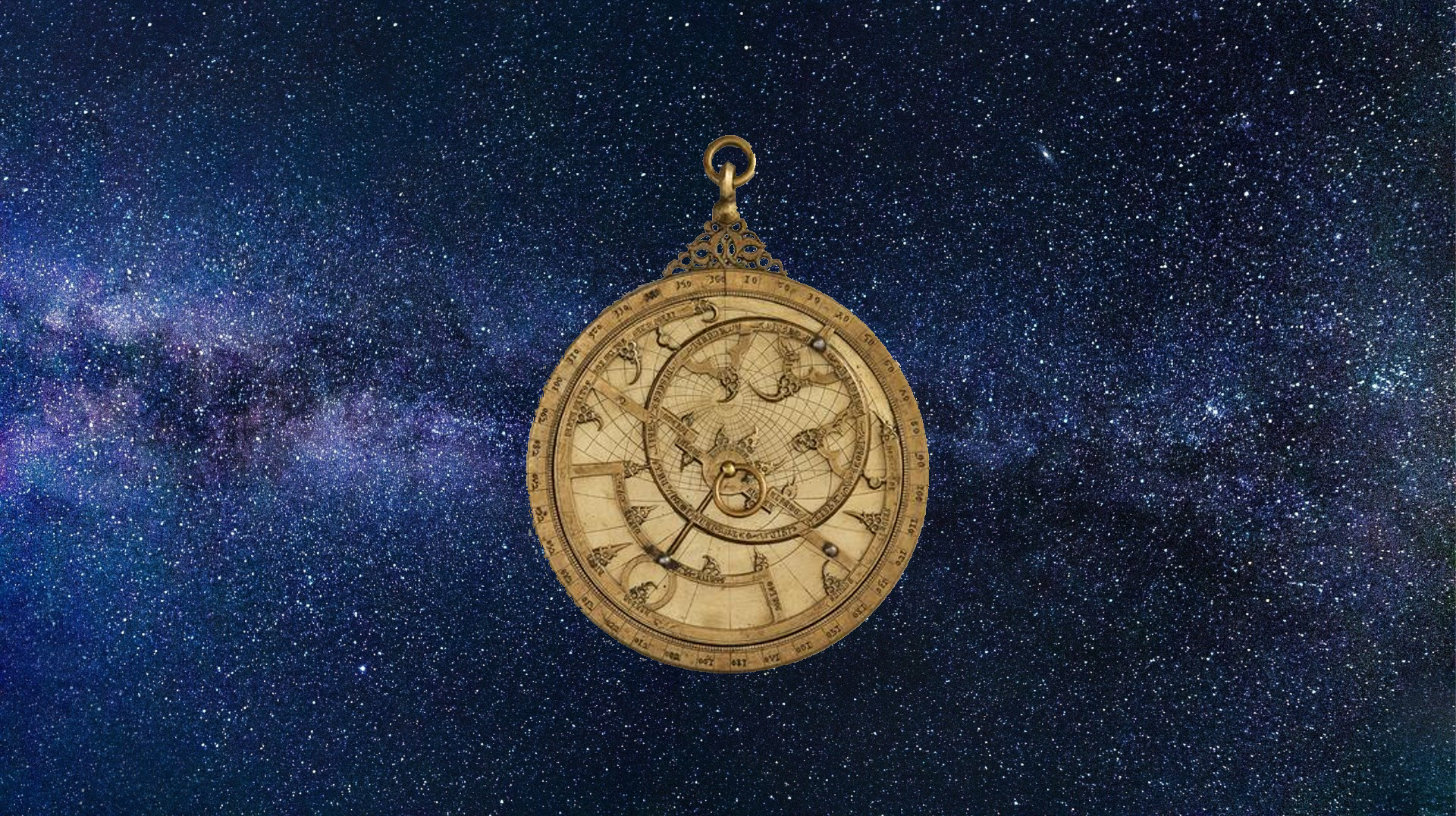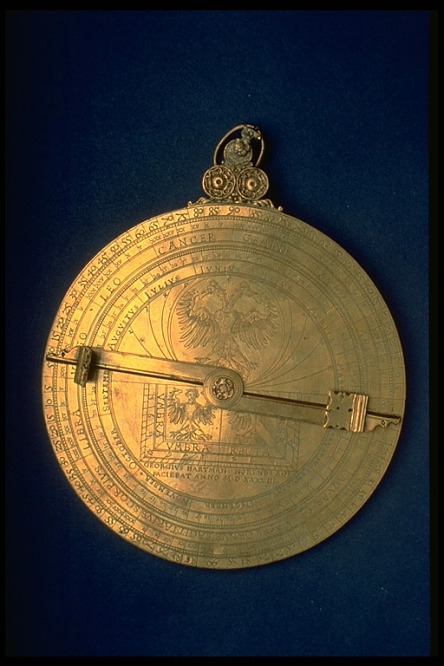

Planispheric Astrolabe
What is a Planispheric Astrolabe?
The planispheric astrolabe is a powerful astronomical computing instrument whose design is particularly clever. It is made up of several fixed or mobile discs, rulers and fine graduations on both sides.
Morphology

Dimensions
Medieval astronomers typically used a planispheric astrolabe measuring 8 to 46 cm (3 to 18 inches).
Physico-chemical properties
The planispheric astrolabe was usually made of metal such as brass or iron.
Anatomy
The planispheric astrolabe possesses 5 main parts, the mater (Latin for mother), the plate, the rete, the rule, and the Alidade.
The main body of the planispheric astrolabe is the mater. The limb is the edge of the mater; on it are engraved a degree scale and a scale of hours. The latitude plates are found in the hollowed-out part of the mater.
Through a mathematical technique called stereographic projection, a celestial sphere is mapped on the plate of a planispheric astrolabe. By using this technique, the 3-dimensional sphere can be represented on a 2-dimensional flat plate. Since each latitude requires its own projection, most planispheric astrolabes have a variety of plates for different latitudes. Within the planispheric astrolabe, they are normally stacked one on top of the other.
The rete is a cutout plate with an ecliptic ring and star pointers that can be rotated, placed over the latitude plates.
Star pointers indicate the location of particular stars, which are often marked on the rete.
The ecliptic ring is the path the Sun follows through the sky each year as viewed from Earth.
The rule is a bar that rotates across the front of the planispheric astrolabe. It is used to locate positions on the plate or rete and to relate them to the hour marks on the limb.
A planispheric astrolabe has a rotating bar on the back that is known as the alidade. By contrast to the rule, the alidade has tiny vanes with slots or pin-holes at each end which serve as sights. The altitude can be measured by holding an object, such as a star, between two sighting holes, and reading off the altitude in degrees on a scale around the edge of the hole.
Utilisation

With the planispheric astrolabe, astronomers could calculate the position of the Sun and famous stars with respect to both the horizon and the meridian.
History

Originating in ancient Greece, the planispheric astrolabe was embraced and refined by the Islamic world around the 8th century, who then introduced it to Europe around the 12th century.
Author: William Homier
Editor: William Homier
This page was last edited on 11 April 2022, at 19:45 (HAE).
Sources:

